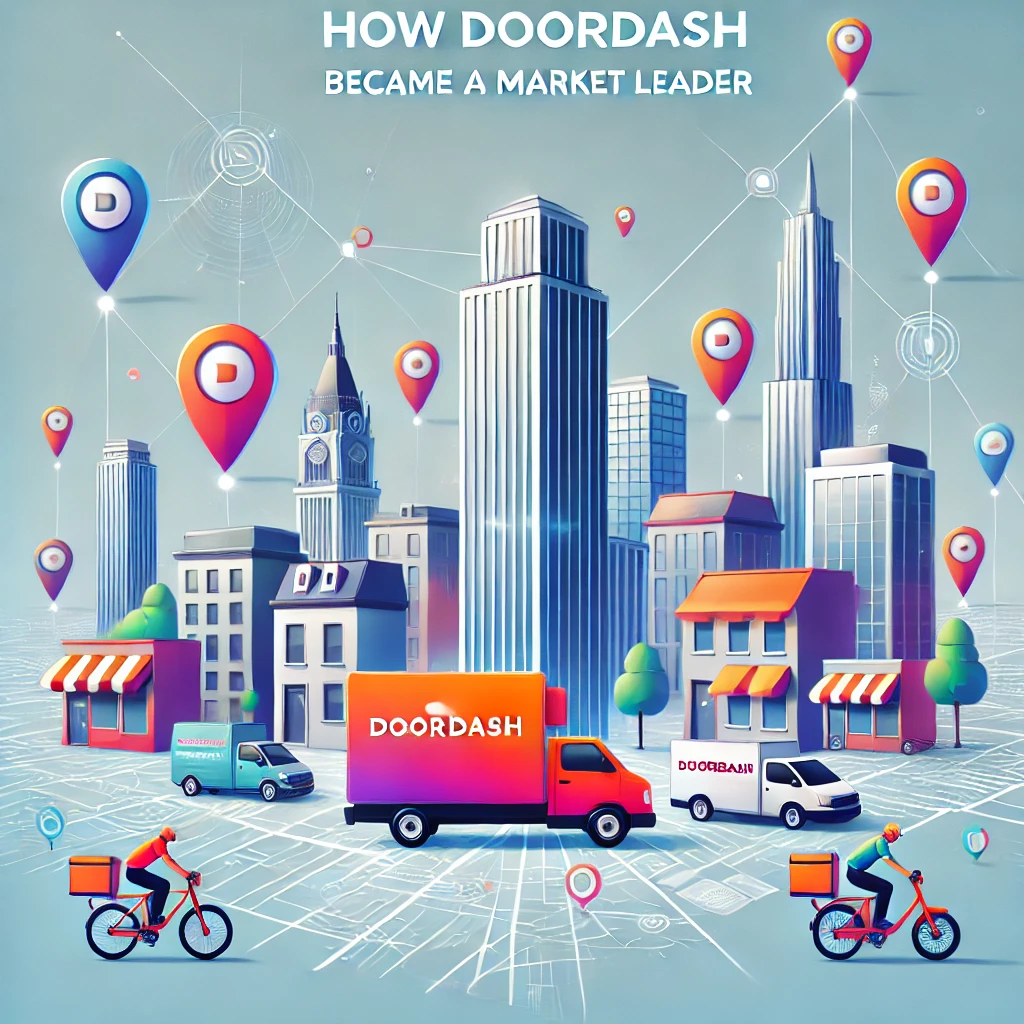DoorDash’s rise to becoming a market leader in the food delivery industry is a remarkable case study for startups looking to disrupt a competitive space.
It wasn’t luck; it was a blend of strategic focus, relentless execution, and a deep understanding of local markets.
The company’s journey from a Stanford project to a multi-billion dollar enterprise holds valuable lessons for entrepreneurs.
Let’s break down the strategies that made DoorDash successful and how startups can apply them.
1. Start Small and Think Big
When DoorDash launched in 2013, it didn’t try to conquer the nation overnight. Instead, it focused on solving delivery challenges in a single location: Palo Alto.
This initial focus allowed them to test and refine their model in a manageable environment.
Actionable Takeaway: Don’t rush to scale. Start in a smaller market, perfect your offering, and build a solid foundation before expanding. Validate your business model with real users and iterate quickly based on feedback.
2. Understand and Own the Last-Mile Logistics
Many startups fail because they underestimate the complexity of last-mile logistics. DoorDash thrived by investing in technology and processes that optimized the final leg of delivery.
Their proprietary algorithms matched drivers to orders efficiently, ensuring timely deliveries.
Actionable Takeaway: Invest in technology that addresses your operational bottlenecks. If last-mile delivery is crucial to your business, prioritize building a robust logistics infrastructure.
3. Leverage Local Partnerships
DoorDash didn’t just sign up restaurants—they partnered with them. They understood that local businesses wanted more than just a delivery service; they wanted a partner who could help them grow.
By focusing on these partnerships, DoorDash built a network of loyal customers and businesses.
Actionable Takeaway: Forge deep relationships with local partners. Understand their pain points and align your solutions to help them succeed. Local partnerships can be a powerful differentiator in crowded markets.
4. Focus on Customer Experience
DoorDash placed immense importance on the user experience. From an intuitive app interface to transparent delivery tracking, they ensured that every touchpoint delighted the customer.
They were also quick to address issues, turning dissatisfied users into brand advocates.
Actionable Takeaway: Obsess over your customer experience. Every interaction matters. Ensure your app or service is easy to use, and proactively solve customer problems to build loyalty and trust.
5. Data-Driven Decision Making
Data played a crucial role in DoorDash’s strategy. They used analytics to optimize everything from delivery routes to customer acquisition strategies.
This data-driven approach allowed them to make informed decisions and stay ahead of the competition.
Actionable Takeaway: Build a strong data culture in your organization. Use data to understand user behavior, identify growth opportunities, and refine your business strategies.
Tools like Google Analytics, Mixpanel, and BI dashboards can be game-changers.
6. Adapt and Evolve
The food delivery landscape has been volatile, especially during the pandemic.
DoorDash adapted by introducing new services like grocery and convenience store delivery, catering to changing consumer needs and expanding their market reach.
Actionable Takeaway: Be prepared to pivot. Monitor market trends and be ready to adapt your product or service offering to meet new demands.
Flexibility can be a key advantage for startups in dynamic industries.
7. Effective Marketing and Branding
DoorDash leveraged both digital and traditional marketing channels to build brand awareness.
Their campaigns, such as the “#OpenForDelivery” initiative, resonated with consumers and showcased their commitment to supporting local businesses.
Actionable Takeaway: Invest in marketing that tells your story and connects with your audience.
A well-crafted campaign can set you apart from competitors and build a loyal customer base. Use social media, content marketing, and influencer partnerships strategically.
8. Building a Strong Team Culture
Behind every successful startup is a passionate team. DoorDash’s founders prioritized building a strong company culture that emphasized innovation, resilience, and customer obsession.
This culture empowered employees to take ownership and drive the company forward.
Actionable Takeaway: Cultivate a team culture that aligns with your vision and values. Encourage creativity, recognize contributions, and create an environment where everyone feels invested in the company’s success.
9. Strategic Fundraising
DoorDash’s fundraising strategy was another crucial factor in its growth. They raised capital at key stages to fuel expansion while maintaining focus on operational efficiency.
This approach ensured they had the resources to scale effectively without burning out.
Actionable Takeaway: Plan your fundraising strategy carefully.
Don’t raise more than you need, and ensure you have a clear plan for using the capital to achieve specific milestones. Investors appreciate a strategic approach to growth.
10. Focus on Long-Term Vision
Despite short-term challenges, DoorDash stayed focused on their long-term vision of building a logistics platform that connects local businesses with consumers.
This vision drove their decisions and helped them navigate industry disruptions.
Actionable Takeaway: Keep your eyes on the long-term vision. Temporary setbacks are inevitable, but a clear sense of purpose can guide you through tough times and keep your team motivated.
Conclusion
DoorDash’s journey from a small startup to a market leader offers invaluable insights for aspiring entrepreneurs.
By focusing on local markets, optimizing logistics, and building strong partnerships, they carved out a unique space in a competitive industry.
For startup founders, the key takeaway is to remain laser-focused on solving real problems, stay agile, and build a strong foundation before scaling.
With the right strategies, even the most competitive markets can present opportunities for growth and success.










